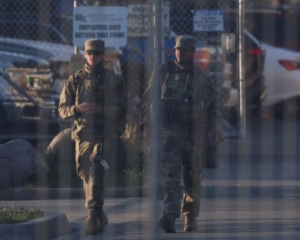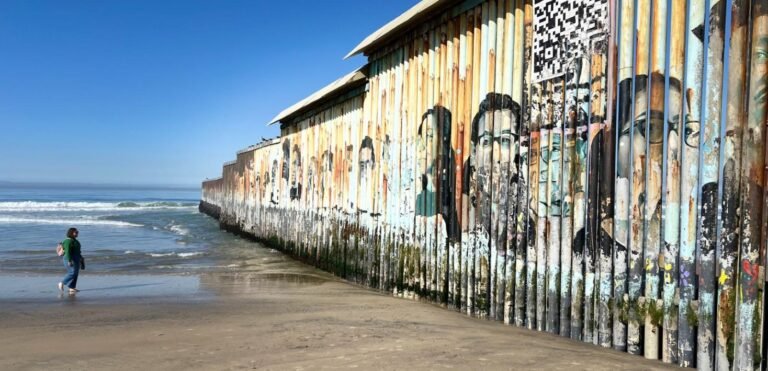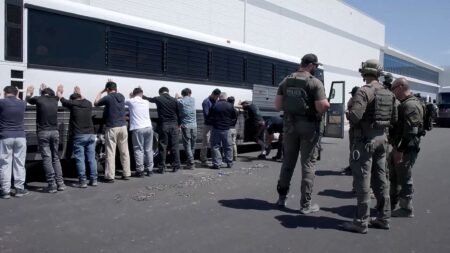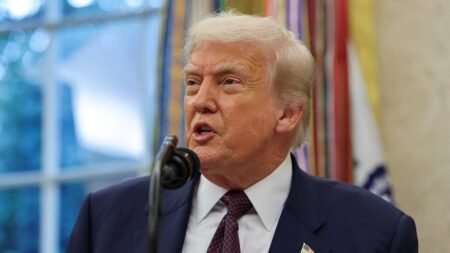The U.S.–Mexico border stretches nearly 1,954 miles from the Pacific Ocean in California to the Gulf of Mexico in Texas, making it one of the most politically and socially significant borders in the world. It touches four U.S. states—California, Arizona, New Mexico, and Texas—and six Mexican states—Baja California, Sonora, Chihuahua, Coahuila, Nuevo León, and Tamaulipas. This long boundary traverses deserts, rivers, mountains, and densely populated urban zones.
One of the most active sections of the U.S.–Mexico border is the San Ysidro Port of Entry, connecting San Diego, California, with Tijuana, Baja California. This crossing is considered the busiest land border in the Western Hemisphere, handling tens of thousands of people daily. Overall, there are 48 official ports of entry along the border, managed by U.S. Customs and Border Protection (CBP). The agency uses a mix of physical barriers, surveillance towers, motion sensors, drones, and ground agents to monitor the region. Over 700 miles of the border are covered by fencing or walls, built to prevent illegal crossings and enhance national security.
The modern U.S.–Mexico border was established in the mid-19th century following the Treaty of Guadalupe Hidalgo in 1848, which ended the Mexican-American War. This treaty set the Rio Grande as the official dividing line between Texas and Mexico. In 1853, the Gadsden Purchase added further territory to the U.S., solidifying the current border layout.
Today, the U.S.–Mexico border is a major flashpoint for immigration debates. Thousands of migrants attempt to cross the border each year, many fleeing violence, poverty, or persecution in Central and South America. Some attempt to enter illegally through remote areas, while others present themselves at legal border crossings to request asylum. The journey is dangerous, especially through desert regions where extreme heat and dehydration are common causes of death. Humanitarian groups frequently patrol these areas to offer water, aid, and rescue support.
In recent years, the U.S. has implemented a variety of immigration enforcement strategies at the U.S.–Mexico border. The “zero tolerance” policy introduced in 2018 resulted in the separation of families, drawing international condemnation. Another controversial measure was the Migrant Protection Protocols, or “Remain in Mexico” program, which required asylum seekers to wait in Mexico while their cases were processed in U.S. courts. During the COVID-19 pandemic, Title 42 allowed for the rapid expulsion of migrants on public health grounds, a policy that remained in place until 2023.
Legal uncertainty and the use of private contractors have added further tension. Some detention centers near the U.S.–Mexico border are operated by private companies, raising concerns about lack of oversight, poor living conditions, and human rights violations. Reports have also emerged about possible unofficial detentions, in which individuals are taken without clear legal process—raising alarms among civil rights organizations.
The U.S.–Mexico border is not only a political boundary but also a vital economic corridor. Billions of dollars in goods cross the border annually, making it essential for trade between the two countries. Under the United States-Mexico-Canada Agreement (USMCA), the border supports a free flow of goods and services vital to industries on both sides. Additionally, Mexican maquiladoras, or manufacturing plants, often located near the border, produce goods for export to the United States, creating jobs and stimulating cross-border economic activity.
Despite the economic benefits, border communities live with high levels of tension and surveillance. Residents often face checkpoints, ID checks, and restrictions that affect daily life. Activists argue that increasing militarization at the U.S.–Mexico border comes at the cost of civil liberties and human dignity.
As migration trends continue and political debates evolve, the U.S.–Mexico border remains a symbol of both opportunity and struggle, linking two nations that share deep historical, economic, and cultural ties.







